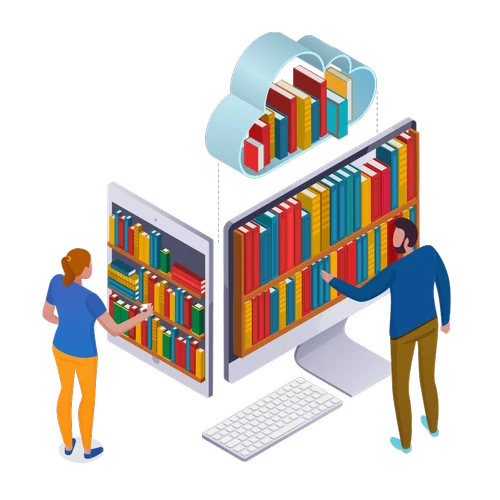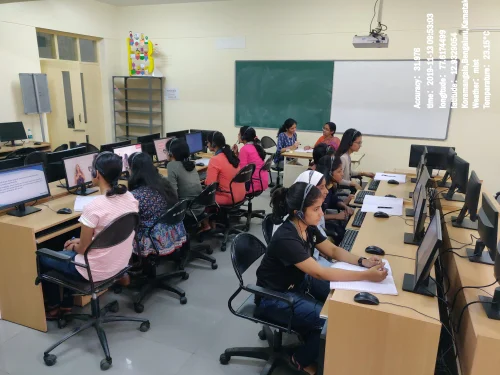In the digital age, libraries are no longer just silent halls filled with shelves of books. They are evolving into dynamic knowledge centers powered by advanced technologies. At the heart of this transformation is library software, an essential tool that plays a pivotal role in the management of modern library systems. From cataloging and circulation to user engagement and digital resource management, library software has revolutionized the way libraries operate.
What is Library Software?
Library software, also known as a Library Management System (LMS) or Integrated Library System (ILS), is a digital solution designed to automate and manage various library functions. It helps librarians and patrons access, organize, and control library resources efficiently. These systems integrate multiple modules such as acquisitions, cataloging, circulation, serials control, and online public access catalogs (OPAC).
Streamlining Book Cataloging and Classification
One of the fundamental roles of library software is automating the cataloging process. Traditionally, cataloging was a manual, time-consuming task involving physical records and index cards. Today, with library software, books and other materials can be entered into the system using standard classification systems such as Dewey Decimal Classification (DDC) or Library of Congress Classification (LCC). These systems help in accurately categorizing books, making them easily retrievable.
Additionally, many library software solutions come with MARC (Machine-Readable Cataloging) format support, allowing for seamless data exchange and integration with other libraries and databases.
Efficient Circulation Management
Circulation is a core activity of any library. It involves lending, returning, renewing books, and managing fines. Library software simplifies these tasks through automation. For example:
- Barcode and RFID integration allows for quick check-in and check-out processes.
- Automated due date reminders and fine calculations reduce human errors.
- Real-time tracking helps librarians keep an accurate record of issued and returned books.
These features enhance user satisfaction and reduce the workload on library staff.
Inventory and Acquisition Control
Library software helps manage the acquisition of new materials, from books and journals to digital content. It allows librarians to:
- Maintain vendor records.
- Track purchase orders.
- Manage budgets and expenditures.
- Monitor the arrival and processing of new acquisitions.
Additionally, the inventory module enables periodic stock checks and identifies missing or misplaced items. This improves accountability and ensures the library collection is up to date and well-maintained.
Enhancing User Access Through OPAC
Modern library software comes equipped with Online Public Access Catalog (OPAC), a user-friendly interface that allows patrons to search the library’s collection from any internet-connected device. OPAC empowers users to:
- Search for books by title, author, subject, or keyword.
- Check book availability.
- Reserve or renew books online.
- View borrowing history.
This self-service capability improves user experience and encourages more engagement with library resources.
Digital Resource Integration
With the growing demand for e-books, audiobooks, and online journals, library software plays a crucial role in integrating and managing digital resources. Libraries can subscribe to digital platforms and link them with their management systems. Patrons can access these materials directly through the software interface.
Many systems also support digital rights management (DRM), ensuring that content is accessed legally and within permitted usage limits.
Reporting and Data Analytics
Data is a powerful tool for decision-making. Library software provides detailed reports and analytics on various aspects of library operations, including:
- Book circulation trends.
- User activity and preferences.
- Budget utilization.
- Popular genres and authors.
These insights help librarians make informed decisions regarding acquisitions, space planning, and user services.
Supporting Remote and Mobile Access
In an era where remote access is vital, modern library software supports cloud-based platforms and mobile applications. This ensures that library services are accessible 24/7, even outside the physical premises of the library. Users can:
- Access digital collections.
- Communicate with librarians.
- Receive notifications and updates.
Such features make the library more accessible, especially to students, researchers, and working professionals.
Security and User Management
Library software ensures that user data and library resources are secure. Role-based access controls prevent unauthorized access to sensitive information. Data backups, encryption, and secure login protocols are also integrated to protect against data loss or breaches.
The Future of Library Software
As technology continues to advance, library software is expected to incorporate artificial intelligence (AI) and machine learning to offer personalized recommendations, automate routine tasks, and enhance search functionalities. Integration with virtual assistants and voice-activated commands may also become standard features, making library systems even more user-friendly.
Conclusion
The role of library software in modern library book management systems cannot be overstated. It has transformed libraries from traditional book-lending institutions into tech-savvy knowledge hubs. By automating processes, enhancing user experience, and integrating digital resources, library software not only improves efficiency but also ensures that libraries remain relevant and valuable in the digital age.
As libraries continue to adapt to changing user needs and technological advancements, robust and flexible library software will remain a cornerstone of effective library management.










